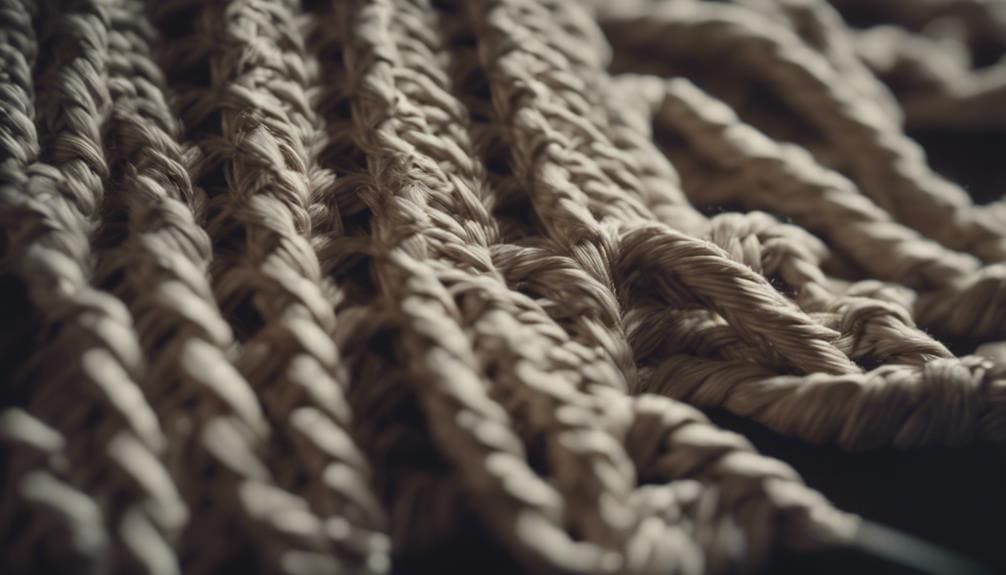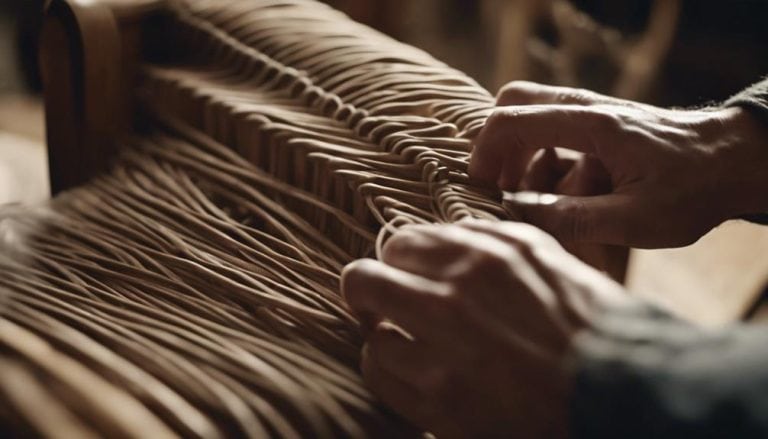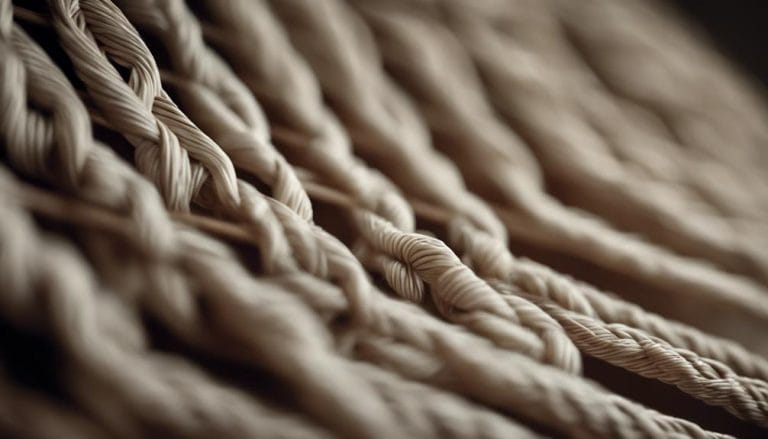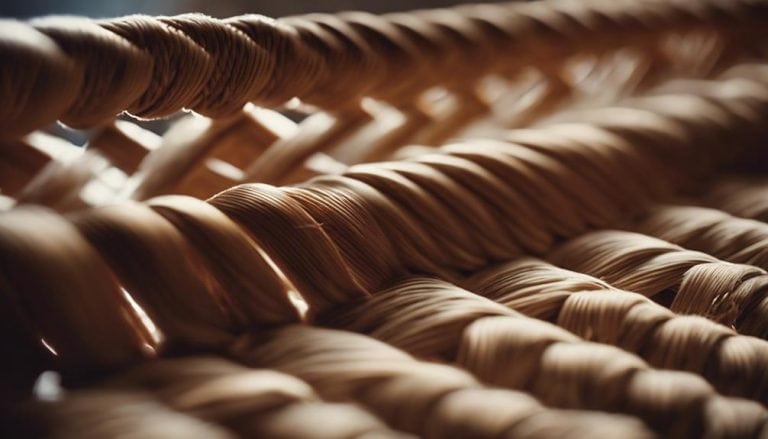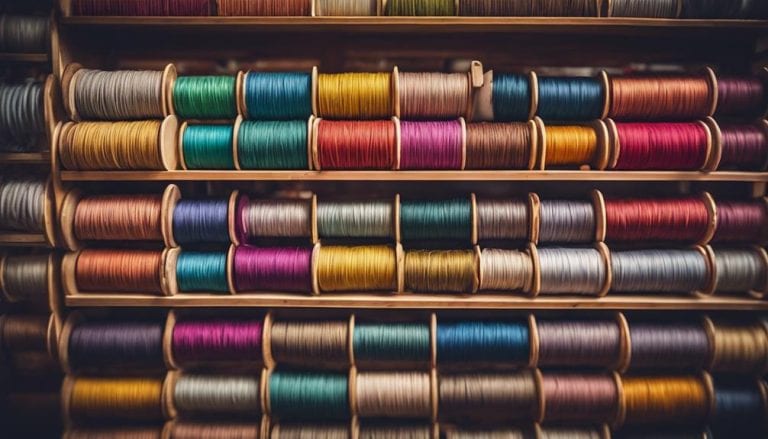Weaving Techniques With Danish Cord
Crafting intricate patterns and sturdy designs, weaving techniques with Danish cord offer a unique blend of tradition and innovation.
The utilization of Danish cord in furniture weaving has a long history, but the evolution of techniques continues to captivate artisans and enthusiasts alike.
From basic patterns to advanced designs, the versatility of Danish cord opens up endless possibilities for creative expression.
Let's explore how these weaving techniques intertwine heritage and contemporary craftsmanship to shape exquisite pieces that stand the test of time.
Key Takeaways
- Master basic and advanced Danish cord weaving patterns for intricate designs.
- Ensure precise spacing, tension, and starting points for durability.
- Explore creative applications in chair seats, back rails, and side rails.
- Uphold tradition with skillful weaving techniques for stunning and durable cord furniture.
Basic Danish Cord Weaving Patterns
Delving into the world of basic Danish cord weaving patterns unveils a tapestry of intricate handwoven techniques that form the foundation of this art form. When working with Danish cord, every cord meticulously woven contributes to the overall strength and beauty of the final piece. The front and back rails are crucial elements in this process, guiding the weaving pattern as it takes shape. By weaving over and under these rails, a structured and durable seat emerges, showcasing the skill and precision required in Danish cord weaving.
Understanding the fundamentals of Danish cord weaving is essential for mastering the art. Consistent spacing between cords and precise starting points are paramount in achieving the desired pattern. Each cord plays a vital role, interlacing with the others to create a cohesive design. Weaving with Danish cord is a meticulous craft that demands attention to detail and a deep appreciation for the traditional techniques that have been passed down through generations.
Advanced Weaving Designs
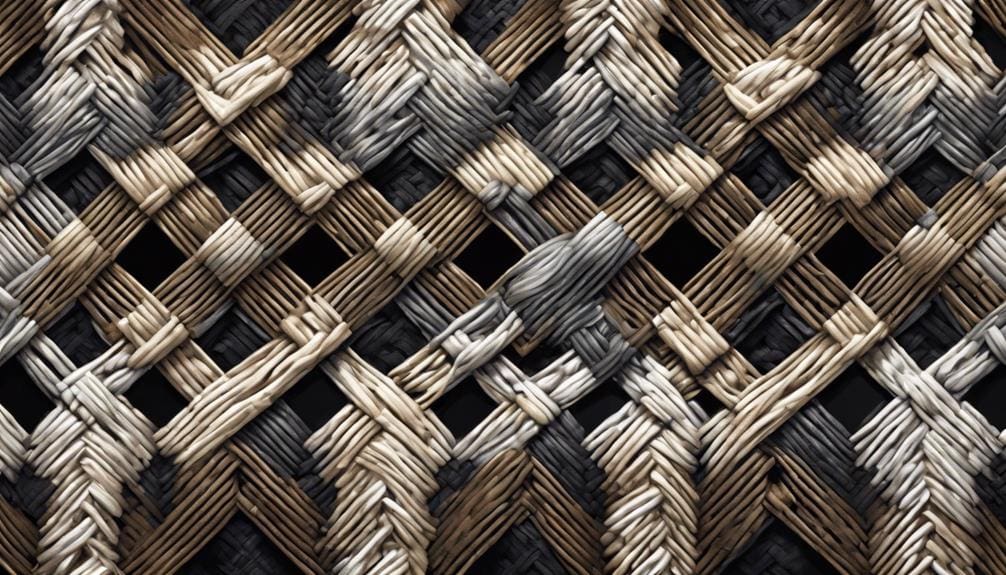
Exploring the realm of Danish cord weaving at an advanced level unveils a realm of intricate patterns and techniques that push the boundaries of creativity and craftsmanship. When delving into advanced weaving designs, one must be prepared to venture into a world where innovation meets tradition. Here's a glimpse into what this entails:
- Side Weaving Techniques: Incorporating advanced weaving techniques on the sides of the seat can add depth and complexity to the overall design.
- Wrapping the Front Rail: Mastering the art of wrapping the front rail with Danish cord requires precision and attention to detail, creating a seamless finish.
- Double Rails Weaving: Experimenting with weaving Danish cord on double rails can elevate the structural integrity of the piece while showcasing intricate patterns.
- Cow Hitches and Unlaced Cord: Utilizing cow hitches and incorporating unlaced cord can introduce unique textures and visual interest, setting your design apart from the ordinary.
In the world of advanced Danish cord weaving, each thread tells a story of skill and artistry, culminating in stunning creations that leave a lasting impression.
Tips for Perfecting Your Weaving Technique
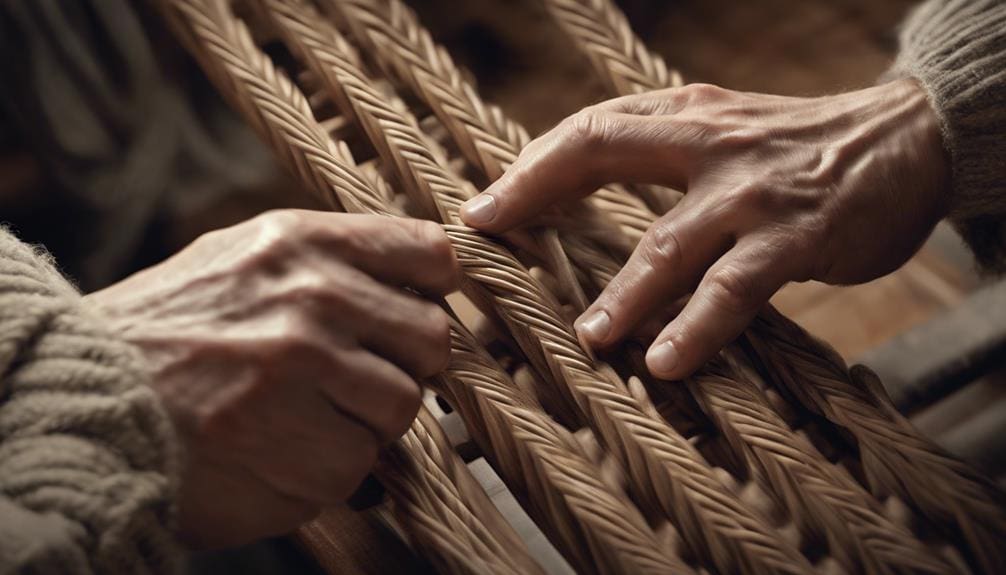
Venturing further into the art of Danish cord weaving, mastering the weaving technique is essential for creating impeccable and durable designs. To perfect your craft, attention to detail is crucial. Utilize a cow-hitch knot for securing the warp cords to the rails efficiently. Consistent spacing and maintaining proper cord tension are key factors in achieving dense and long-lasting woven seats. Danish cord, known for its strength derived from twisted paper plies, is the preferred material for weaving intricate patterns on chair seats. Marking centerlines on the front and back rails will help you uphold weaving patterns and spacing accurately, resulting in flawless designs. Understanding the composition of Danish cord is essential for weaving techniques that stand the test of time. Embrace the power of precise technique to create stunning cord seats that exude both beauty and durability.
| Tips for Weaving Technique | Importance |
|---|---|
| Cow-hitch Knot | Efficiently secures warp cords |
| Consistent Spacing | Ensures dense and durable woven seats |
| Cord Tension | Key factor for achieving longevity |
Creative Applications of Danish Cord
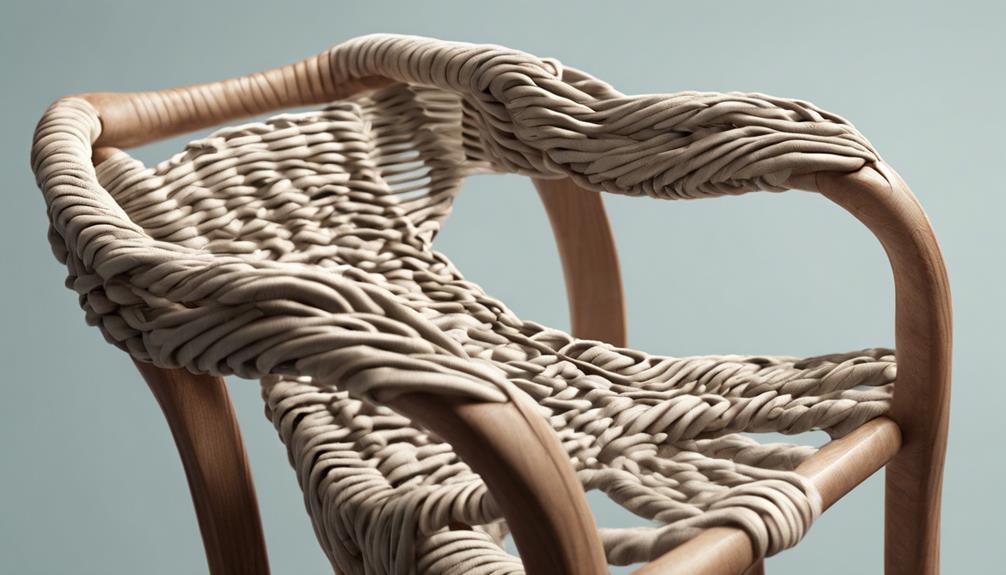
Embracing the versatility of Danish Cord, one can uncover a myriad of innovative and artistic applications in furniture design.
- Chair Seats: Utilizing Danish Cord for chair seats offers a sleek and modern aesthetic, enhancing comfort while exuding sophistication. The intricate weaving pattern creates a durable yet visually appealing seating surface.
- Back Rail: Weaving Danish Cord along the back rail of a chair adds a touch of elegance and luxury. This technique not only provides support but also showcases the craftsmanship and attention to detail in the furniture piece.
- Side Rail: Incorporating Danish Cord into the side rail of furniture pieces brings a unique and contemporary flair. The interplay of the cord's texture against the wood or metal frame creates a striking visual contrast.
- Seat: Wrapping Warp Pairs: Pull the cord tightly and wrap the front warp pairs with precision to create a seamless and polished finish. This meticulous process ensures the longevity and durability of the Danish Cord weave.
Maintenance and Care for Danish Cord Furniture
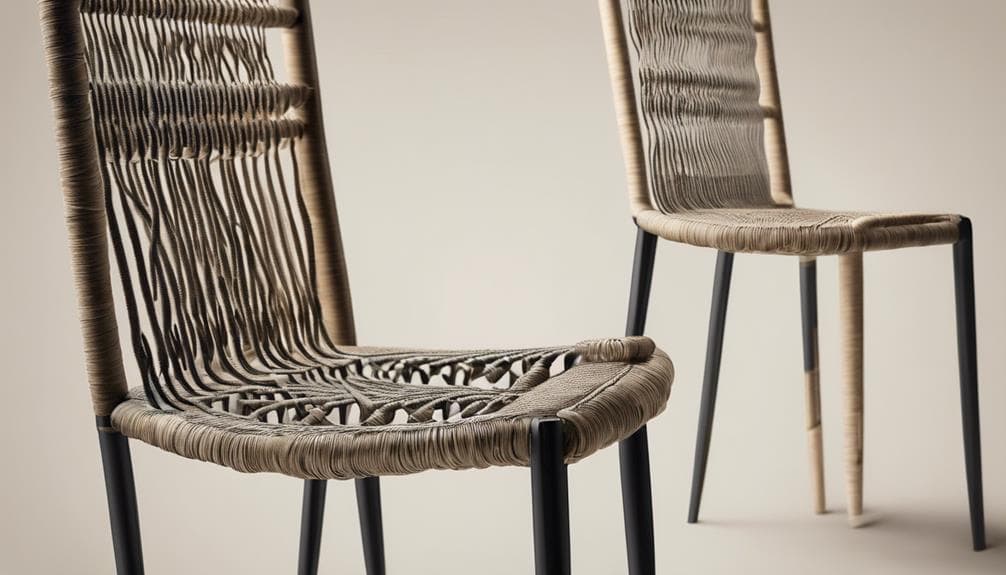
With a gentle touch and regular upkeep, Danish Cord furniture can withstand the test of time, showcasing both durability and elegance in any space. Proper maintenance is essential to ensure the longevity of Danish Cord furniture. Here are some key tips for caring for your Danish Cord pieces:
| Maintenance Tips | Description |
|---|---|
| Wipe with Damp Cloth | Periodically wipe the furniture with a damp cloth to remove dust. |
| Inspect for Wear | Regularly check cords for signs of wear, damage, or loosening. |
| Apply Protective Wax | Apply a protective wax layer to prevent stains and enhance longevity. |
Danish Cord, also known as Danish paper cord, is meticulously woven on the front and back of furniture pieces, often wrapping around the side rails. When maintaining Danish Cord furniture, pay special attention to the left side where the cord is made and secured. Remember to tack the cord securely at the first and last points to ensure it remains in place. Additionally, inspect the end of the cord to ensure it is properly secured to prevent unraveling. By following these maintenance tips, your Danish Cord furniture will continue to exude elegance and durability for years to come.
Exploring Unique Weaving Innovations
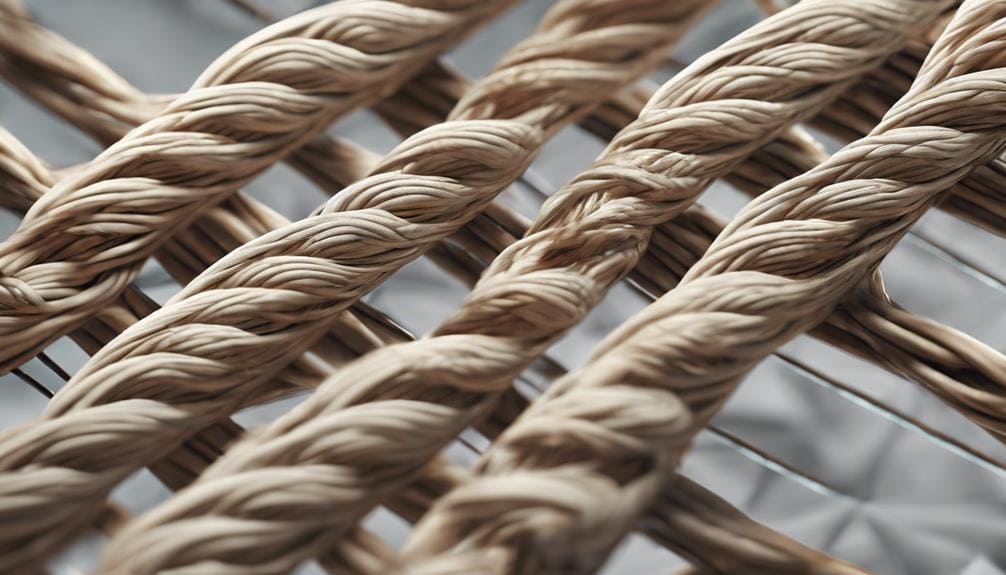
Innovations in weaving techniques with Danish cord have opened up a world of unique possibilities, pushing the boundaries of traditional craftsmanship to create stunning and durable seat designs.
To achieve these innovative weaves, one must make sure to utilize cow-hitch knots instead of using nails, ensuring a dense and gap-free finish that enhances the durability of the seat.
When weaving from front to back, reaching the other side involves a meticulous process of keeping the cord in place while maintaining tension to achieve a uniform and elegant pattern.
Hans Wegner, a pioneer in Danish furniture design, emphasized the importance of precision in weaving, encouraging artisans to go back and check their work to ensure a flawless outcome.
These unique weaving innovations not only showcase the strength and durability of Danish cord but also highlight the intricate artistry and attention to detail required to master this traditional craft.
Frequently Asked Questions
What Is the Nail Spacing for Danish Cord Weaving?
Maintaining proper tension in Danish cord weaving requires precise nail spacing and cord thickness. Careful nail placement influences the weaving pattern, ensuring a strong and durable seat. Attention to finishing touches and maintenance tips enhance decorative options for a professional finish.
Which Is Better Laced or Unlaced Danish Cord?
Laced Danish cord boasts exquisite tension control, allowing for intricate patterns. Unlaced cord offers more color options but may lack durability compared to laced. Hand weaving with laced cord requires specialized tools for a superior finish.
What Is a Danish Cord Used For?
Danish Cord is a versatile material perfect for chair seats, interior design, and upholstery repair. Its durability makes it ideal for outdoor furniture, while its traditional basket weaving techniques add a touch of Scandinavian style to modern homes.
How Long Does Danish Cord Last?
Danish Cord lasts for what feels like an eternity, meeting durability standards beyond imagination. With proper care and maintenance, its longevity benefits are unmatched. Don't underestimate its strength; it's an environmental powerhouse in furniture weaving.
Conclusion
After mastering the art of weaving techniques with Danish cord, I feel like I can conquer any chair restoration project with ease. The intricate patterns and unique designs have transformed my furniture pieces into works of art.
Danish cord has truly become my secret weapon in creating durable and visually stunning woven seats. It's like weaving magic into every fiber, turning ordinary chairs into extraordinary masterpieces!

